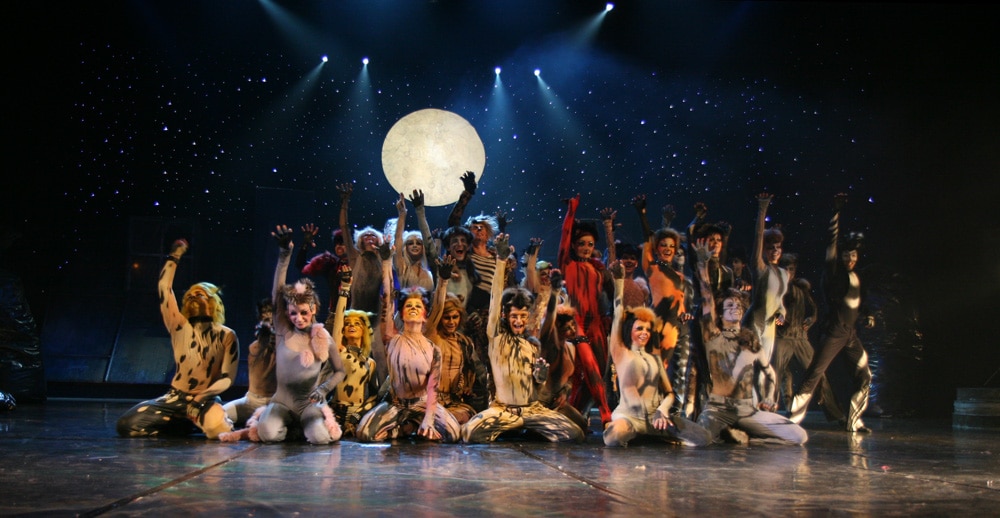
Musical Magic: Why We Love to Show Musicals to Our Students
 I love showing musicals to my students. Kids are mesmerized by the spectacle, the joy, and the drama. Kids are easily hooked in to the stories and exuberant song and dance numbers (and often end up clapping after songs finish). I could go on and on about why musicals are important to the history of theater/music, how they’ve influenced pop music and popular culture, the different ways that musical theater songs can be used in the classroom, and on and on. But my guess is that many of you already know how wonderful musicals can be and the great effect that they can have upon students.Instead, I wanted to take a moment to talk about which musicals I use in the classroom and why.
I love showing musicals to my students. Kids are mesmerized by the spectacle, the joy, and the drama. Kids are easily hooked in to the stories and exuberant song and dance numbers (and often end up clapping after songs finish). I could go on and on about why musicals are important to the history of theater/music, how they’ve influenced pop music and popular culture, the different ways that musical theater songs can be used in the classroom, and on and on. But my guess is that many of you already know how wonderful musicals can be and the great effect that they can have upon students.Instead, I wanted to take a moment to talk about which musicals I use in the classroom and why.
I have some absolute favorite musicals that I try and show at some point every year. Watching a full musical does take up quite a bit of class time and to some it might feel like it’s a “cop out” to show a video instead of involving the kids in a musical activity where they create or reproduce music on their own. However, I would say sometimes the best learning comes when you are reflecting and thinking about music instead of creating if yourself. I mean, I learn a lot about teaching when I teach but I glean a heck of a lot more when I watch a video of myself teaching. The same is true for kids. They learn a lot when they’re singing, speaking, dancing, and playing but they learn in different ways when they watch and evaluate a performance. That’s why there are local and national standards that support evaluation of music and music performances.
I have never had an administrator, teacher, or parent question my decision to show musicals, but I have always been worried that someone might. I know some administrators who say “NO VIDEOS” for any reason, and honestly I feel sorry for the kids that learn in those buildings. While “no videos” might ensure more contact time with a real live teacher, in no way can it replace the experience that students can get from a video journey. I can’t take students to an active volcano but I can show them a video about volcanoes and how they work. There’s no way for me to transport all my students to Egypt, but I can absolutely find a great video showing students the culture, history, and mythology of Egypt and its mighty pyramids. In the same way I might not have the money or resources to order busses, buy tickets, get chaperones, pay for lunches, and drive off to experience something like a live orchestra, college marching band, or professional musical. Instead, for a fraction of the cost I can get a professional recording of any great musical experience and share that joy with students. In the music room, videos are vital to sharing the vast musical experience and are wonderful tools to show students instruments, concert halls, musical groups, and more. I show students musicals so that they can experience something they would never be able to experience in my classroom alone.
 So excited to welcome guest blogger Tracy King!
So excited to welcome guest blogger Tracy King!
Mary Poppins
TRACY’S PICK
Annie
DAVID’S PICK
Annie is the story of a plucky, red-haired girl who dreams of life outside her dreary orphanage. By a stroke of luck, Annie is chosen to stay for one week with the famous billionaire Oliver Warbucks. Annie is easy to love and full of joyful energy. One week turns into many and the only person standing in the way of Annie’s fun is Miss Hannigan, the hard-hearted ruler of the orphanage. Will Miss Hannigan’s zany attempts to kidnap the irrepressible Annie succeed? Will Annie change the heart of the cold businessman, Oliver Warbucks? Will the kids in the orphanage finally find a forever home and loving family? Will you ever get the iconic songs “It’s a Hard Knock Life” or “Tomorrow” out of your head? Seriously, you listen to “The Sun Will Come Out Tomorrow” once and it’ll be on an endless loop in your brain. You have been warned!I think Annie is a great “beginner” musical to show to kids a for a variety of reasons. First of all, kids love to see KIDS singing, dancing, and acting. Just the fact that the main character is a kid makes this movie a winner for many students. I also like showing this musical to kids because lots of my kiddos can connect with Annie in personal ways. Many of my students come from low-income families and some actually are in foster homes. They resonate with Annie and want to see her succeed. I also like how the musical doesn’t gloss over how hard it is for Annie to let go of her original parents. Spoiler alert: Annie never ends up with her “real parents” but finds a home with Mr. “Daddy” Warbucks. Another important theme is that Mr. Warbucks’ millions of dollars can’t solve Annie’s problem. Money doesn’t make everything better and in fact it’s the the money that complicates Annie’s problems. Students engage with real issues and see kids struggling with real problems. At the same time, the joy and exuberance of the musical is so palpable that kids love to watch and come away feeling happy and excited.
So, let’s say you’ve decided to show Annie to your kiddos. There have been several movie version of the Annie story and it’s hard to decide which version of the show is best. Here are my thoughts. The original Annie (1982) is a great version and features amazing actors like Carol Burnett, Tim Curry, and Bernadette Peters. I don’t think you can get past how great Carol Burnett is as the mean Mrs. Hannigan, but I don’t love that she drinks pretty much all the time. Yes, Annie was set in a time period where people made gin in their bathtubs, but that doesn’t mean I want to share that with kiddos in school. I also don’t love how the only black and Asian characters are portrayed in very stereotypical and borderline racist ways. I save this version and show scenes like “It’s A Hard Knock Life” to kids. The 1999 version is slightly better and doesn’t present Mrs. Hannigan as a terrible drunk. You’ll enjoy seeing Kathy Bates, Victor Garber, Audra McDonald, Kristin Chenoweth, and Alan Cumming in an Annie adaptation by Disney… expect some Disney magic.
The newest adaptation from 2014 presents a whole new twist on the story (and features Jamie Foxx, Quvenzhané Wallis, Rose Byrne, Bobby Cannavale, and Cameron Diaz). This is set in present-day and shows Annie as a kid in foster care just trying to make it through the system. There are lots of updates that change the story a little bit but the bones of the original story remain (no nation-wide search for Annie’s parents, Warbucks is renamed “Stacks,” and lots of people/places are modified). The only downside is that Mr. Stacks says “They’ll kick your ass in Harlem,” and a couple characters say the word “hell” throughout. Come on producers, you know this will be shown to kids! If you are willing to bleep those moments, then this version might be the best. Updated songs (with mash-ups that kids love) and new takes on old characters make this a kid-favorite.
Bye Bye Birdie
TRACY’S PICK
Conrad Birdie is the biggest rock & roll star of the 60’s ever to be drafted. Aspiring chemist and song writer Albert is convinced he can make his fortune and marry his girlfriend Rosie if he gets Conrad on the Ed Sullivan show to kiss a high school girl goodbye. Hilarity ensues in this fast and funny musical! I think that this musical has some of the most memorable songs of any musical. Songs like “Put on a Happy Face” and “Kids” and “The Telephone Hour” really appeal to students.
Elvis Presley is obviously the model for the character of Conrad Birdie. When introducing Bye Bye Birdie, I start with the story of Elvis. I’ll play an Elvis song and ask them to identify the performer. Then I’ll show them THIS video. It makes them giggle and then we talk about the audience’s response to his performance. What modern performers illicit a similar response? Why do you think this happens? Many conversations lead to Justin Beiber. The girls giggle. The boys roll their eyes. Then we watch THIS and continue the conversation.
One of my favorite extension activities for Bye Bye Birdie is to have students re-write the lyrics to “We Love You, Conrad”. Here’s a clip.
I love your apps and case so blue.
When you’re not near me, I’m grounded. Dude.
Oh, iPhone, I love you.We love you music. Oh yes we do.
We love you hip hop, rockin’ and blue.
We love to visit you on days of Tues.
Oh, music we love you.We love you, Grandma. Oh, yes we do!
We love your cookies and your hair so blue.
But when you wear your night gown, we can see through.
Oh, Grandma we love you.They made me smile too! The last one borders on negative, but the student explained that it was a “public service announcement”. That made me laugh, so I accepted it.
The Sound of Music
DAVID’S PICK
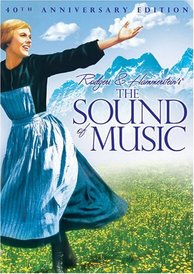 Every year that I show this musical I get worried that the kids won’t like it. As the camera pans in to Maria on the Alps spinning and singing “The Hills are Alive!” I think to myself…. “there’s no way the kids (or at least the boys) are buying this. There’s no way they’re going to sit quietly and watch this movie about a would-be nun who goes off to nanny for 7 crazy kids.” But somehow the movie always strikes a chord with them. NEVER has a student called it lame or weird or boring, and for the life of me I can’t tell you why this movie appeals so much. I’m just so glad that it does.
Every year that I show this musical I get worried that the kids won’t like it. As the camera pans in to Maria on the Alps spinning and singing “The Hills are Alive!” I think to myself…. “there’s no way the kids (or at least the boys) are buying this. There’s no way they’re going to sit quietly and watch this movie about a would-be nun who goes off to nanny for 7 crazy kids.” But somehow the movie always strikes a chord with them. NEVER has a student called it lame or weird or boring, and for the life of me I can’t tell you why this movie appeals so much. I’m just so glad that it does.
In case you’re not familiar, The Sound of Music is a musical by Rodgers and Hammerstein that tells the true-life story of Maria, a spirited young Austrian woman who leaves the convent to become a governess for Captain von Trapp’s seven unruly children. Her charm and songs soon win the hearts of the children – and their father. But when Nazi Germany unites with Austria, Maria is forced to attempt a daring escape with her new family. Maybe it’s because kids are main characters or it might be that Maria is the embodiment of positivity and courage. Maybe it’s the catchy music or dramatic plot elements. For whatever reason, The Sound of Music is very clearly a fan-favorite with my kiddos.
On the outside this musical seems to be a perfect and “family-friendly” choice with great and catchy songs like “The Sound of Music,” “Do a Deer…” and “Climb Every Mountain.” I mean, there’s a song all about solfege, how great is that!? However, when you look past the smiles and joy of the overall effect you realize that this musical is very squarely based on sensitive and difficult issues. There are some serious conversations to be had about religion (Maria does want to become a nun after all!), history, culture, language, and more. Austria has been taken over by the Nazis, alliances in the country and the social structure are changing, the oldest von Trapp daughter ends up in a relationship with a Nazi, and so much more. The main thrust of the storyline is based on the fact that these children need a nanny/governess because their mother has died and their father uses his military background (he used to be in the Navy) to manage their family. This is not a “when you wish upon a star” sort of story, but it enchants kids and draws the in nonetheless.
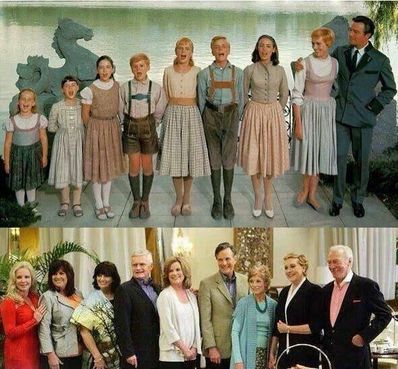 I cannot even tell you how many great conversations I’ve had with kids because of this musical and all the wonderful extension topics that it has brought up. I’ve never felt like it was a mistake to show Sound of Music because the musical is clearly a pilar of the genre and reinforces a variety of musical concepts. At the same time, SOM teaches kids history, culture, and asks them to think about questions that they would get very little exposure to anywhere else in the elementary school curriculum.
I cannot even tell you how many great conversations I’ve had with kids because of this musical and all the wonderful extension topics that it has brought up. I’ve never felt like it was a mistake to show Sound of Music because the musical is clearly a pilar of the genre and reinforces a variety of musical concepts. At the same time, SOM teaches kids history, culture, and asks them to think about questions that they would get very little exposure to anywhere else in the elementary school curriculum.
P.S. The Julie Andrews version… not Carrie Underwood.
Oklahoma!
TRACY’S PICK
This classic musical share stories of life and love in the Oklahoma territory. I’ve used this musical with 4th graders all the way through high school general music classes. In addition to learning “Oh, What A Beautiful Morning” (available in the Get American Singing collections), here are some great ideas for extension activities:
-Write a poem about your perfect day inspired by “Oh, What a Beautiful Morning”
-What is a sooner? Do you think Aunt Eller could have been one? Write a biography for Aunt Eller assuming that she was.
-Create a poster enticing settlers to move to the Oklahoma Territory.
-It’s job fair time! You have been commissioned to speak at a local job fair. Choose to represent the farmers or the cowmen and make a presentation enticing young adults to choose one or the other.
Most of these activities have accompanying worksheets or writing prompts in a mega bundle I have in my store. Click here to see everything that’s included.
Fiddler on the Roof
DAVID’S PICK
Fiddler on the Roof tells the story of a poor milkman, Reb Tevye, who lives with his wife and five daughters in the pre-revolutionary Russia town of Anatevka. The entire movie really revolves around the opening song: “Tradition!” Everything in the small town depends on the strongly-held traditions continued by the Jewish people that live there. Here’s a great line from that opening song, “Because of our traditions, we’ve kept our balance for many, many years. Here in Anatevka, we have traditions for everything: how to sleep, how to eat… how to work… how to wear clothes. For instance, we always keep our heads covered, and always wear a little prayer shawl that shows our constant devotion to God. You may ask, “How did this tradition get started?” I’ll tell you! [pause] I don’t know. But it’s a tradition… and because of our traditions… Every one of us knows who he is and what God expects him to do.”I can clearly remember when I was in 5th grade and Mrs. Rytych showed my class Fiddler on the Roof. Growing up an a small, rural town in Nebraska I had no concept of the Jewish people or the traditions that guided their life. Everything I knew about Jews I knew from Sunday School and the stories from the Christian Bible. I didn’t know them from THEIR perspective and Fiddler gave me a glimpse into the life of a Jew in Russia. More than that, while Fiddler allowed me start to understand the Jewish people it really helped me start to see MANY other cultures in a new way.
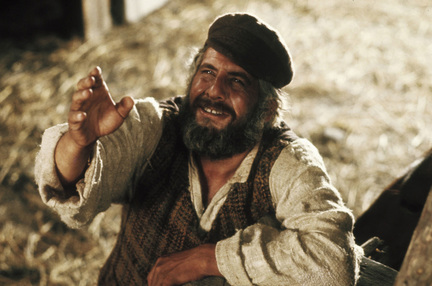 Tevya from Fiddler on the Roof
Tevya from Fiddler on the Roof
As I show Fiddler on the Roof to my students now, I find that they have the same sorts of struggles that I did. They struggle to understand how boys can go to school but girls must stay home and work in the house. They don’t like or understand arranged marriages and get really indignant when Tevya allows some marriages but not others. At first the traditions seems odd and outlandish but soon my students invest in this little village and Tevya’s family. When the Jews begin to experience persecution and push-back from the other Russians in the village my kiddos get really frustrated. “Why are they picking on the Jews? What did they do wrong? They just kept to themselves!?”I often show this video at the end of 5th grade and it is a sort of culminating experience for my students. We watch The Sound of Music in 4th grade, sing the Dreidel Song and play the Dreidel game in 5th grade, and experience other songs and symbols of the Jewish faith through their elementary experience. I’ve had a lot of great discussions with kids about the Jewish faith and understanding faith and cultural traditions outside of our own context. This year I had a really fascinating discussion with a few girls about head scarves. They noticed that the Jewish men and women always wear something on their head and that Tevya says “we cover our heads to show our devotion to God.” Then they asked if Muslims and other cultures covered their heads for the same reason. We had a fascinating discussion about cultural norms and how what we think of as “normal” might not be acceptable to someone from another culture.

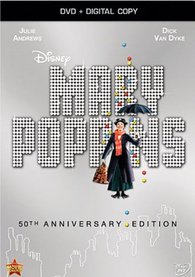
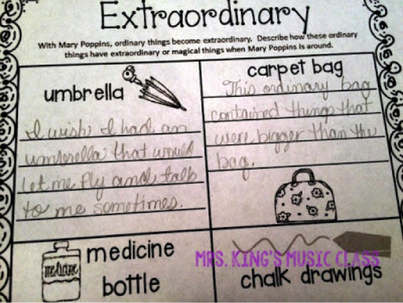
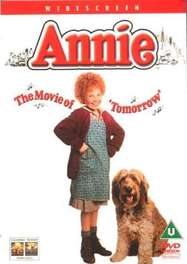
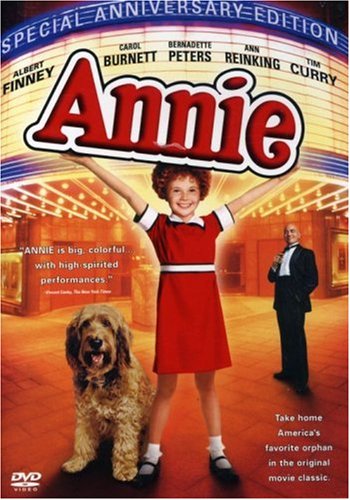
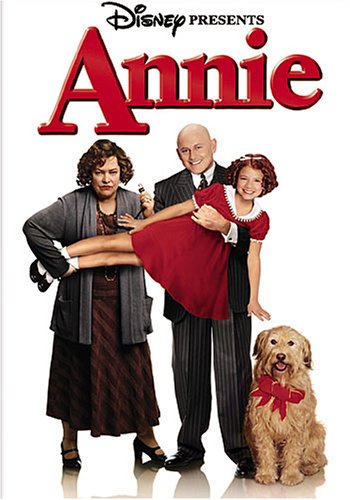
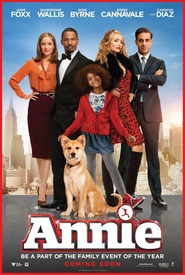
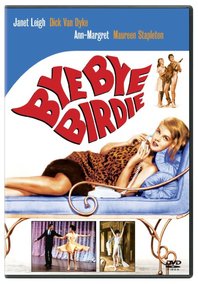




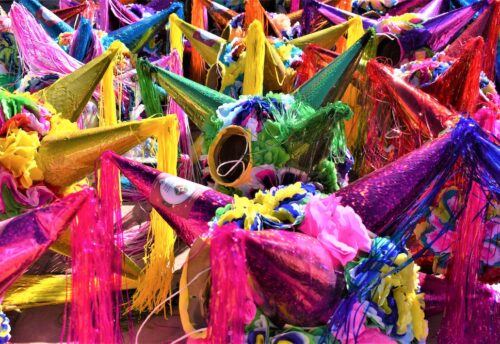
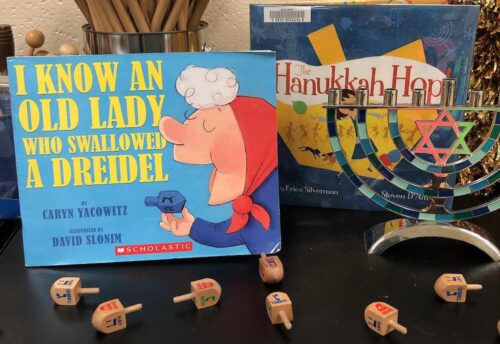
8 Comments